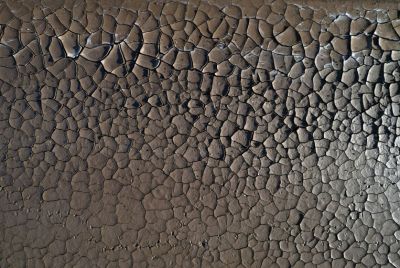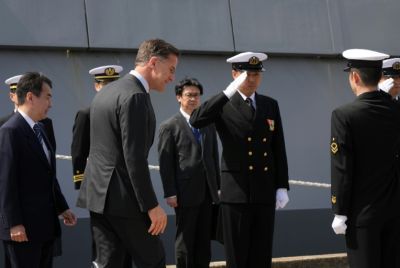NASA, Lockheed Martin & Ball Aerospace Team complete on-orbit Orion MPCV navigation system test
In an unprecedented on-orbit maneuver, Commander Mark Kelly completed the first ever Orion Multi-Purpose Crew Vehicle (MPCV)-like approach to the International Space Station at 3:24 a.m. CDT today as part of the Sensor Test for Orion Relative Navigation Risk Mitigation (STORRM). The orbital rendezvous verified the successful operation of the MPCV's next generation docking sensor, which NASA has identified as a critical technology needed for future space exploration missions.
The NASA, Lockheed Martin (NYSE: LMT) and Ball Aerospace (NYSE: BLL) team worked closely with STS-134 Mission Specialist Andrew Feustel to successfully complete the on-orbit test of this system which will make rendezvous and docking maneuvers safer for future spacecraft. The flight test represented the first and only opportunity for in-flight collaboration of NASA's three human spaceflight programs -- space shuttle, International Space Station and Orion MPCV.
"This flight test demonstrated the exceptional capability of the Vision Navigation Sensor (VNS) and the Docking Camera, two key components of the Orion relative navigation system," said Catherine Boone, Ph.D., the Lockheed Martin electro-optics engineer who was working in NASA's Mission Control Center during the re-rendezvous event. "We were able to collect about 600 gigabytes of data that will verify the design meets the high performance standards required for Orion MPCV and other future spacecraft. Follow-on testing at our Space Operations Simulation Center in Denver will also provide an opportunity to look at how we may be able to expand on that performance to make the system as powerful and accurate as possible for the dynamic environments of deep-space exploration missions."
Jeanette Domber, Ph.D., senior payloads system engineer and Ball's lead for STORRM, explained that unlike other navigation sensor flight experiments, which simply collected data during normal shuttle operations, the STORRM flight test leveraged America's human spaceflight assets in a true "test-like-you-fly" scenario. "This test exercised the Orion relative navigation sensors exactly as they will be flown on future human space exploration vehicles," said Domber. "This mission provided NASA a one-of-a-kind opportunity to prove out the performance of this technology in a real spaceflight environment."
STORRM demonstrates a robust relative navigation design that provides the required docking accuracy and range capability necessary to meet crew safety, mass, volume and power requirements for a wide variety of future NASA missions, including those into deep space. The STORRM hardware components consist of a high definition docking camera, the advanced laser-based VNS, an avionics assembly to provide power and record data, a space-certified laptop computer, and reflective docking targets that were installed on the space station during STS-131.
During the mission, STORRM's VNS performed better than expected by providing continuous measurements from as far away as three-and-a-half miles to within six feet of the space station -- three times the range capability of the current relative navigation sensor. The next generation sensor technology also provided exceptional three-dimensional images of the docking target.
As its nickname indicates, STORRM was a whirlwind project. When given the opportunity to fly and test the system on one of the last shuttle missions, the Orion STORRM team kicked into high-gear to rapidly design, build and test all the components to be ready in half the usual time required for such a system to be manifested for the shuttle flight's payload.
"The Lockheed Martin, Ball and NASA STORRM team worked efficiently and seamlessly to accomplish this important risk mitigation test," said Larry Price, Lockheed Martin deputy program manager for the Orion MPCV program. "It was an immense undertaking and everyone gave it their all to design a system necessary for future exploration spacecraft to conduct safe approach and docking maneuvers to other spacecraft."
STORRM is an innovative technology development effort led by NASA's Multi-Purpose Crew Vehicle Project Office at NASA Johnson Space Center in partnership with NASA Langley Research Center, Lockheed Martin Space Systems Company, and Ball Aerospace & Technologies Corporation. This technology has earth-bound applications for terrain mapping, robotics, military operations and transportation, including collision avoidance systems for vehicles.
Lockheed Martin leads the Orion MPCV industry team which includes major subcontractors as well as a nationwide network of minor subcontractors and small businesses. In addition, Lockheed Martin contracts with hundreds of small and disadvantaged business suppliers across the United States through an expansive supply chain network.
Headquartered in Bethesda, Md., Lockheed Martin is a global security company that employs about 126,000 people worldwide and is principally engaged in the research, design, development, manufacture, integration and sustainment of advanced technology systems, products and services. The Corporation's 2010 sales from continuing operations were $45.8 billion. www.lockheedmartin.com/orion
Ball Aerospace & Technologies Corp. supports critical missions of important national agencies such as the Department of Defense, NASA, NOAA and other U.S. government and commercial entities. The company develops and manufactures spacecraft, advanced instruments and sensors, components, data exploitation systems and RF solutions for strategic, tactical and scientific applications. For more information visit www.ballaerospace.com.
Ball Corporation is a supplier of high quality packaging for beverage, food and household products customers, and of aerospace and other technologies and services, primarily for the U.S. government. Ball Corporation and its subsidiaries employ more than 14,500 people worldwide and reported 2010 sales of more than $7.6 billion.




















